Thermalright Archon SB-E X2 Super-Cooler Review: Evolution Apogee

Let’s take a closer look at the most efficient single-array tower cooler out there designed for six-core Intel processors.
Thermalright Inc. Company keeps on polishing off their famous Archon cooler. We tested its third version called Thermalright Archon SB-E recently and today we want to show you the fourth incarnation – Thermalright Archon SB-E X2.

We are going to check out any changes in its design and test its performance and noise level in comparison with the previous version as well as with the best of air coolers.
Technical Specifications and Recommended Pricing
All technical characteristics of the new Thermalright Archon SB-E X2 cooler are summed up in the table below for your convenience:
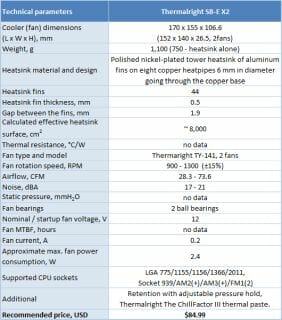
Packaging and Accessories
The packaging hasn’t changed for years. The new Archon is shipped in the same brown cardboard box as its predecessors:
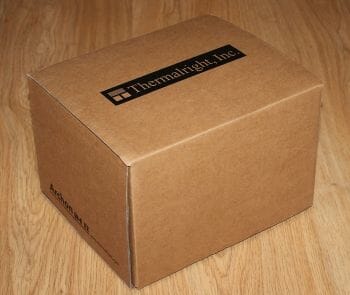
The heatsink and fans are protected against any damage during transportation with pieces of polyethylene foam. The accessories can be found in a separate flat box, each of them in a single-use plastic pack:
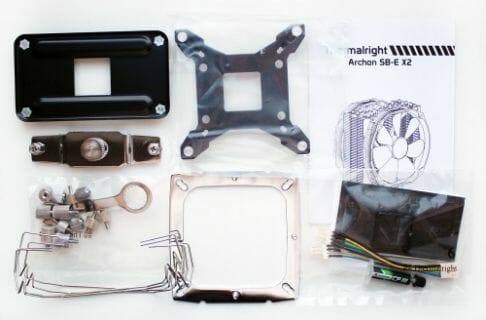
We can see a standard selection of fasteners, Thermalright ChillFactor III thermal grease, and a Y-shaped splitter for fans.
The cooler costs $85, which is slightly higher than the recommended price of the ordinary Archon SB-E. It is manufactured in China and has a 2-year warranty.
Design and Functionality
If you expect original solutions and daring innovations from such a conservative company as Thermalright, you may be disappointed here. The key new feature of the Archon SB-E X2 in comparison with the regular Archon SB-E is that it comes with two fans rather than only one.
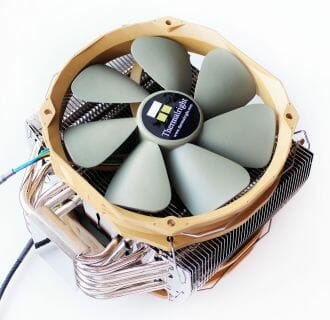
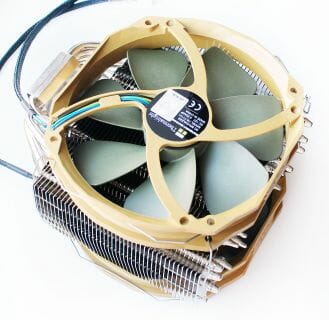
It still retains some elegance and slimness thanks to the nickel-plated heatsink which is polished to a mirror shine.
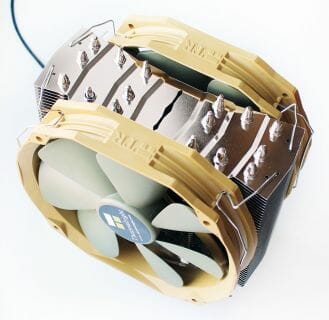
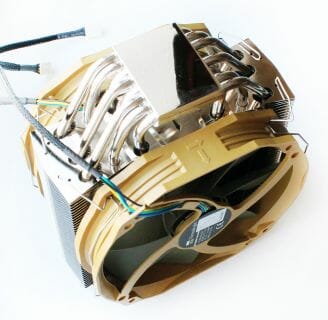
The dimensions of the heatsink haven’t changed. It is 170.2 mm in height, 155 mm in width and 53.6 mm in depth.
The heatsink weighs 750 grams. It consists of eight nickel-plated copper heat pipes, 6 mm in diameter, which go through the cooler’s base and pierce the aluminum fins.
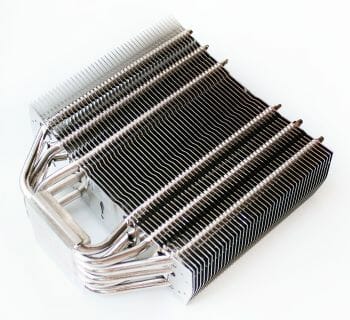
The heatsink consists of 44 fins placed 1.9 mm apart from each other. Each fin is 0.5 mm thick. The total area of the heatsink is about 8000 sq. cm.
The pipes are soldered to the fins, which is where Thermalright products are superior to most of their opponents.
The heat pipes are soldered to the cooler’s base, too. You can easily see this in the photo:
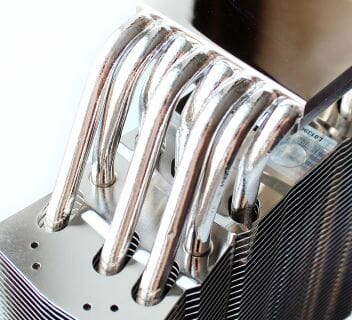
It can also be seen that the bottom fins of the heatsink do not have contact with all of the pipes. The surface of the cooler’s base is finished perfectly:

It can be used as an actual mirror. Like the previous versions of the cooler, this one has a convexity in the middle. You can easily see that by the thermal grease imprint on the CPU heat-spreader:

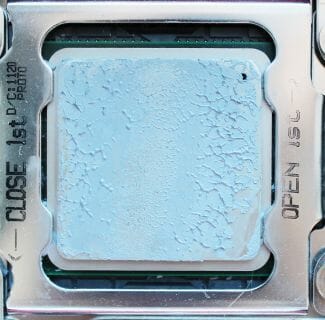
The Thermalright Archon SB-E X2 comes with two TY-141 fans. We’ll discuss and test them in detail in our upcoming fan roundup.
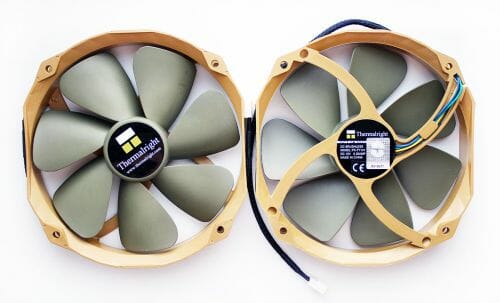
For now, we can tell you that their speed is PWM-regulated in a range of 900 to 1300 RPM. The specified air flow is 28.3 to 73.6 CFM. The noise level range is 17 to 21 dBA.
Interestingly, unlike the TY-140 and TY-150 fans installed on the earlier versions of the Archon, the fans of the Archon SB-E X2 feature a dual ball bearing. Its service life isn’t specified, though. Basic information about the fan can be found on its sticker:
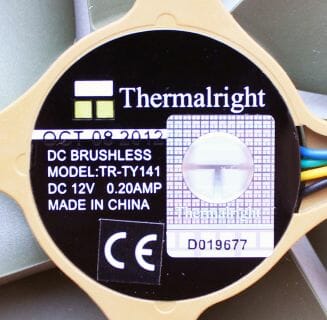
The 4-pin sleeved cable is 300 mm long. The fans are still secured on the heatsink with wire brackets. The silicone pads employed for absorbing vibrations are much larger than really necessary. It is very hard to glue them to the heatsink properly so that they really suppressed vibrations rather than served as mere decoration.
Compatibility and Installation
Like its predecessors, the Thermalright Archon SB-E X2 is versatile and supports all modern CPU platforms. You must follow the instructions closely, but the procedure hasn’t actually changed since the earlier versions of the cooler. So if you’ve ever installed an Archon, you should have no problems installing the SB-E X2.
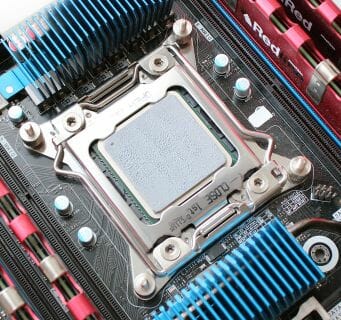
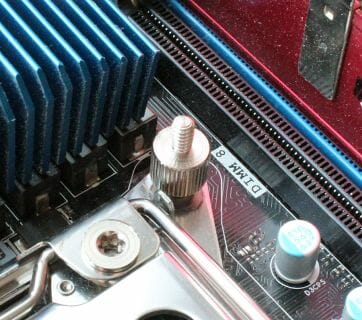
Here’s how it goes with the LGA2011 platform the Archon SB-E X2 is targeted at in the first place. A mounting plate is installed first using the bushings you insert into the mainboard’s mounting holes.
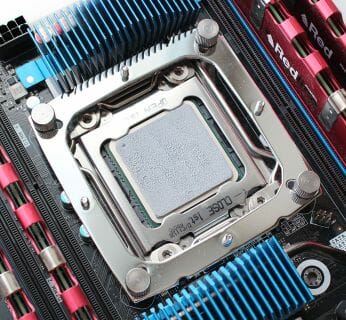
Then you put the cooler down and secure it with a steel retention plate using two screws.
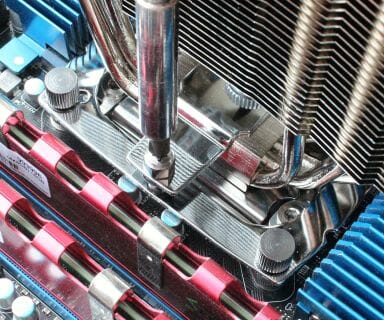
The Archon SB-E X2 features the original version of the fastening which allows to adjust the pressure force from 40 to 70 pounds.
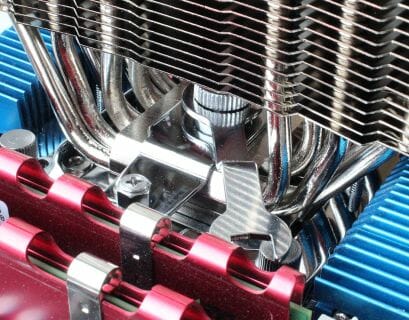
That’s exactly what we put on our wish list in the conclusion to the Archon SB-E review, by the way.
When installed, the heatsink doesn’t block anything near the CPU socket, but the fans hang lower and may conflict with memory modules in the two nearest slots, if the modules have heatsinks.
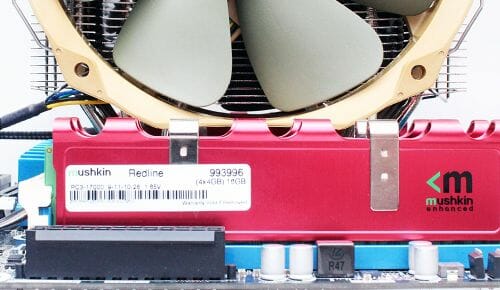
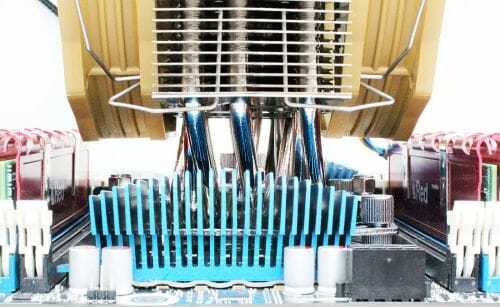
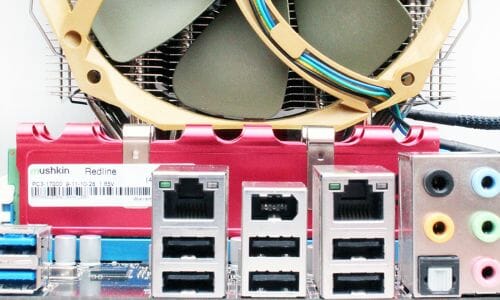
The Archon SB-E X2 looks very attractive inside our computer case thanks to its polished nickel-plated heatsink.
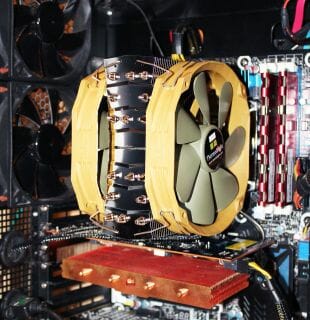
Testbed Configuration and testing Methodology
We tested all coolers inside a closed system case with the following configuration:
- Mainboard: Intel Siler DX79SI (Intel X79 Express, LGA 2011, BIOS 0537 from 07/23/2012);
- CPU: Intel Core i7-3960X Extreme Edition, 3.3 GHz, 1.2 V, 6 x 256 KB L2, 15 MB L3 (Sandy Bridge-E, C1, 32 nm);
- Thermal interface: ARCTIC MX-4;
- Graphics card: Gigabyte GeForce GTX 650 Ti 2 GB (GV-N65TOC-2GI);
- System memory: DDR3 4 x 4GB Mushkin Redline (Spec: 2133 MHz / 9-11-10-28 / 1.65 V);
- System drive: Crucial m4 256 GB SSD (SATA-III, CT256M4SSD2, BIOS v0009);
- Drive for programs and games: Western Digital VelociRaptor (300GB, SATA-II, 10000 RPM, 16MB cache, NCQ) inside Scythe Quiet Drive 3.5” HDD silencer and cooler;
- Backup drive: Samsung Ecogreen F4 HD204UI (SATA-II, 2 TB, 5400 RPM, 32 MB, NCQ);
- System case: Antec Twelve Hundred (front panel: three Noiseblocker NB-Multiframe S-Series MF12-S2 fans at 1020 RPM; back panel: two Noiseblocker NB-BlackSilent PRO PL-1 fans at 1020 RPM; top panel: standard 200 mm fan at 400 RPM);
- Control and monitoring panel: Zalman ZM-MFC3;
- Power supply: Seasonic SS-1000XP Active PFC F3 1000 W (with a default 120 mm fan).
For the today’s tests we overclocked our six-core processor with the clock generator frequency set at 125 MHz, the multiplier at 34x and “Load-Line Calibration” enabled to 4.375 GHz. The nominal processor Vcore was increased to 1.385 V in the mainboard BIOS. Turbo Boost was disabled during this test session, and Hyper-Threading technology was enabled to increase the heat dissipation. The memory voltage was at 1.65 V and its frequency was 2000 MHz with 9-11-10-28 timings. All other parameters available in the mainboard BIOS and related to CPU or memory overclocking remained unchanged.
All tests were performed under Windows 7 Ultimate x64 SP1 operating system. We used the following software during our test session:
- LinX AVX Edition version 0.6.4 – to load the processor (memory – 4500 MB, Problem Size – 24234, two 11-minute cycles);
- Real Temp GT version 3.70 – to monitor the processor core temperatures;
- Intel Extreme Tuning Utility version 3.1.201.5 – for monitoring and visual control of all system parameters during overclocking.
So, the complete screenshot during the test session looks as follows:
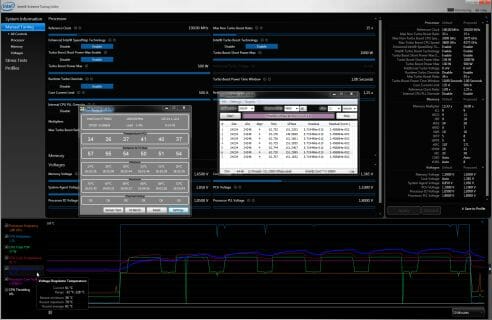
The CPU was loaded with two consecutive LinX AVX test runs with the settings as indicated above. The stabilization period for the CPU temperature between the two test cycles was about 8-10 minutes. We took the maximum temperature of the hottest CPU core for the results charts. Moreover, we will also provide a table with the temperature readings for all cores including their average values. The ambient temperature was checked next to the system case with an electronic thermometer with 0.1 °C precision that allows hourly monitoring of the temperature changes over the past 6 hours. The room temperature during our test session varied between 23.4-24.0°C.
The noise level of each cooler was measured between 1:00 and 3:00 AM in a closed room about 20 m2 big using CENTER-321 electronic noise meter. The noise level for each cooler was tested outside the system case when the only noise sources in the lab were the cooler and its fan. The noise meter was installed on a tripod and was always at a 150 mm distance from the cooler fan rotor. The tested cooling systems were placed at the edge of the desk on a sheet of polyurethane foam. The lowest noise reading our noise meter device can register is 29.8 dBA and the subjectively comfortable noise level in these testing conditions was around 36 dBA (do not mix it up with low noise level). The fan(s) rotation speed was adjusted in the entire supported range using our in-house controller by changing the voltage with 0.5 V increment.
Today Thermalright Archon SB-E X2 will compete against Archon SB-E with one default TY-150 fan as well against the best air-cooler available today – Phanteks PH-TC14PE, which two default 140 mm Phanteks PH-F140 fans were replaced with the quiet Corsair AF140 fans:
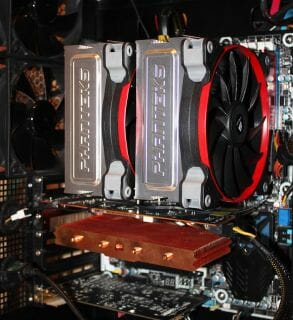
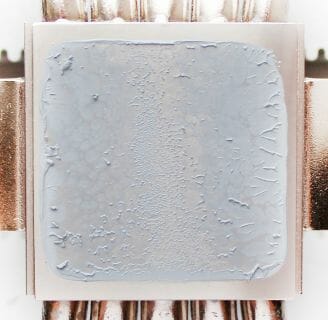
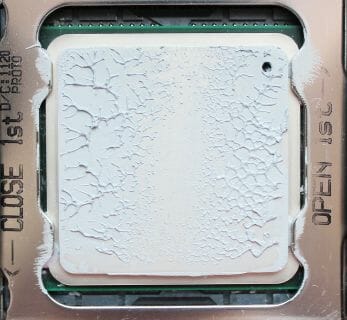
This modification didn’t affect the cooling efficiency, as we have already pointed out in our previous reviews, but it significantly reduced the level of generated noise. Nevertheless, we are going to also include the Phanteks cooler results in its default configuration. I would also like to add, that the rotation speed of all fans was controlled using our in-house controller with ±10 RPM precision and 200 RPM increments.
Performance
Cooling Efficiency
You can see the results of our tests in this table as well as in the following diagram:
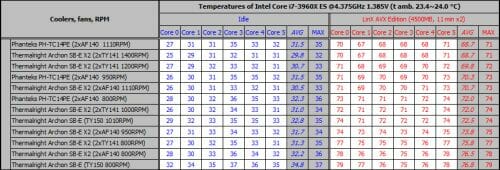
The Thermalright Archon SB-E X2 does improve the standing of single-tower coolers in their competition with dual-tower ones. At the maximum speed of their fans, the Archon SB-E X2 is as good as the Phanteks PH-TC14P? and even better in terms of minimum CPU temperature in idle mode. When the two TY-141 fans are slowed down by 200 RPM, the Archon remains as efficient as before, stopping a mere 1°C short of the best result. The further reduction of speed by 200 RPM, to 1000 RPM, makes the temperature rise by 2°C to 74°C. The Phanteks PH-TC14P? can deliver the same performance at 800 RPM, so the best air cooler is ahead here in terms of noisiness as we’ll show you later on.
At 800 RPM the Archon SB-E X2 allows the temperature to rise by 3°C more, yet remains 2°C ahead of its predecessor, the Archon SB-E with one TY-150 fan. Comparing these two versions, the X2 is definitely better thanks to its two fans (even though they are smaller now) and the fastening mechanism with adjustable pressure force.
Replacing the default Thermalright TY-141 fans with two Corsair AF140 fans didn’t improve the performance of the Archon SB-E X2, despite the difference in speed. We can also see that the Archon SB-E X2 is inferior at peak load to the Phanteks PH-TC14P? if both are equipped with the same fans: by 2°C at 1150 RPM and 950 RPM and by 4°C at 800. The Phanteks is larger than the Thermalright in terms of its heatsink area, hence the difference, the other factors being identical.
You can compare the new Archon’s performance with products we tested previously in the following table and diagram. Each cooler was tested in its default configuration at the maximum speed of the fan(s) with the CPU overclocked to 4.375 MHz at a voltage of 1.385 volts:
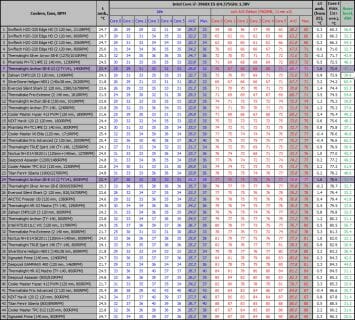
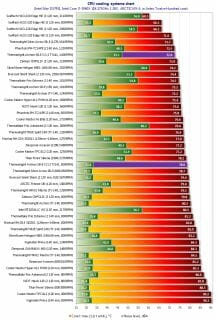
As in the main diagram with test results, the Thermalright Archon SB-E X2 is at the very top, almost beating the Phanteks PH-TC14P? in performance and being even quieter than the latter (with default fans). At a speed of 800 RPM the Archon SB-E X2 is better than the Silver Arrow SB-E, becoming one of the best coolers for quiet mode. It is only surpassed by the Phanteks PH-TC14P? with two default fans at 800 RPM but the latter produces more noise.
Next we tried to overclock our CPU with the Archon SB-E X2 as high as possible and reached a clock rate of 4.5 GHz at a voltage of 1.435 volts. The peak temperature of the hottest CPU core was 77°C:
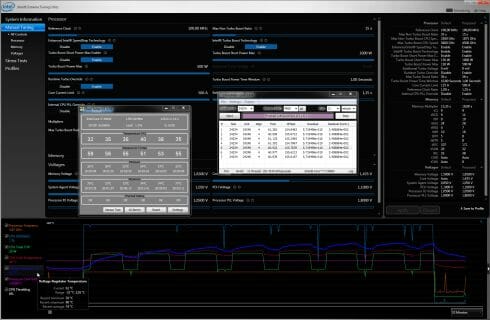
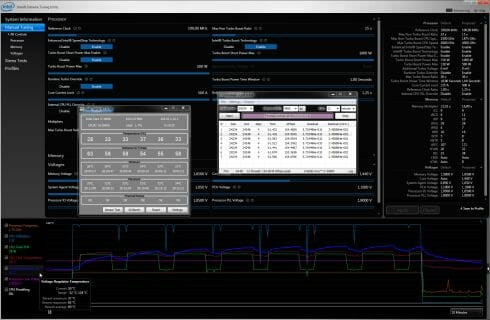
The Phanteks PH-TC14P? copes with the CPU easily, keeping the temperature lower by 2°C. We couldn’t make our CPU stable with the Archon SB-E X2 at a higher CPU frequency and voltage.
As a result, the Thermalright Archon SB-E X2 takes one of the leading positions in the middle group in terms of maximum CPU overclocking:
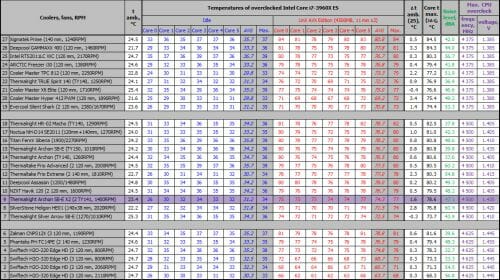
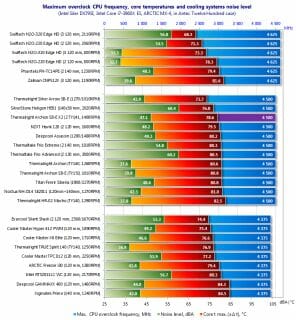
Noise Level
We measured the noise level of our coolers throughout the entire speed range of their fans. Here are the results:
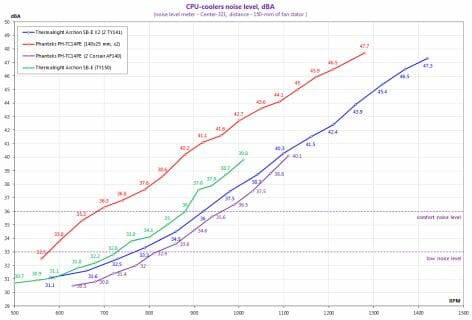
The Phanteks PH-TC14P? with two high-quality Corsair AF140 fans is the only cooler to be quieter than the Thermalright Archon SB-E X2, but the difference isn’t large. In its standard configuration the Phanteks is much louder than the others. Equipped with two TY-141 fans, the new Archon SB-E is quieter than with a single TY-150. The pair of TY-141 fans remains comfortable up to 920-930 RPM and quiet at 780 RPM. As we’ve seen in the performance tests, the Archon SB-E X2 is very, very efficient even at such a low speed, so it is going to satisfy users who need the best performance/noise ratio.
Conclusion
Thermalright’s Archon cooler seems to have reached its apogee in the SB-E X2 version. Now, two years since the original Archon, it probably delivers maximum performance possible for this heatsink type. We don’t know any other single-tower air cooler that would be capable of competing with coolers that have dual-section heatsinks as successfully as the Archon SB-E X2 does. Moreover, if we compare the coolers from Thermalright and Phanteks in their standard configurations, the former is quieter, even though a little inferior in terms of CPU temperature and overclocking. It features complete CPU compatibility and a simple installation procedure. It has reliable fastening with adjustable pressure force and doesn’t conflict with memory modules that have tall heatsinks (except for the two nearest slots). Finally, it just looks splendid. What else could be improved in this product? Price is perhaps the only factor that might be made even more attractive, but we have no power over it, unfortunately.